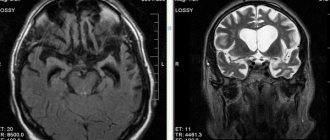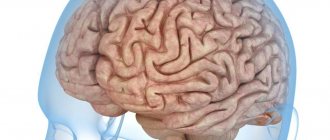Lobotomy is considered the most controversial procedure in the history of medicine. It was developed in the middle of the 20th century. for the treatment of patients with severe forms of mental disorders. But over time, it began to be used to pacify the daring disposition and rebellious character.
At first, this operation was considered as a last chance for healing, but today it is banned.
Lobotomy was used to treat severe mental disorders.
History of the operation
The starting point in the history of lobotomy can be considered 1848, when the American builder Phineas Gage suffered a severe head injury: a steel crowbar pierced his skull. As a result, the worker lost about 15% of his brain tissue, but survived and returned to an active lifestyle.
However, his emotional state and social skills changed: according to friends, he became hot-tempered and disrespectful. Then in scientific circles there was an assumption about the role of the brain in the formation of personal characteristics.
In 1888, the Swiss psychiatrist G. Burckhardt performed a series of operations to excise part of the frontal lobes in patients with symptoms of schizophrenia. This was the first lobotomy experience in history.
6 people took part in the experiment, the condition of 2 of them improved. The results obtained were criticized by the medical community, so Burckhardt soon stopped working in the field of psychosurgery.
The idea of leucotomy was returned only in the mid-1930s, when the problem of overcrowding in psychiatric hospitals worsened. Portuguese neurosurgeon Egas Moniz and psychiatry professor Almeida Lima began developing a new method. And in 1935 the first operation was carried out. However, subsequent experiments led to mixed results: patients became more manageable, but over time the effect weakened.
The developments of the Portuguese interested the American doctor W. Freeman, who immediately began research. In 1936, he performed the first operations, and later developed a method for excision of the frontal lobes without trepanation.
Despite the conflicting results, his technique was accepted by many surgeons as a last resort for the treatment of seriously ill patients. Thanks to Freeman, lobotomy became a widely used procedure in the United States and was in great demand for 20 years. Only after the invention of effective antipsychotics was it banned.
Walter Freeman in surgery.
Nothing better came to mind
Nowadays, lobotomy seems like an attribute of horror films: a mad doctor-villain, armed with thin bayonets and a hammer, punches holes in the skulls of his victims, turning them into obedient zombies. More than 70 years ago, however, this operation was widely used in psychiatry: in some countries, lobotomy was prescribed for almost a mild form of anxiety disorder, and the Nobel Prize in Physiology or Medicine was even awarded for the development of the first method of performing it. We talk about why doctors needed to drill holes in the skulls of patients and whether it actually helped, as well as how Soviet lobotomy differed from the world one, in our material.
In 1949, the American writer William Faulkner received the Nobel Prize in Literature (with the wording “for his significant and artistically unique contribution to the development of the modern American novel”). The prize in physics went to the Japanese Hideki Yukawa for predicting the existence of mesons, particles that carry the interaction between protons or neutrons, and in the field of chemistry, William Jioka was noted for his experiments with record low temperatures.
The prize in physiology and medicine was shared by two scientists: the Swiss Walter Hess - for describing the role of the diencephalon in regulating the functioning of internal organs, and the Portuguese António Egas Moniz - for the method of surgical treatment of mental disorders he had developed several years earlier - leucotomy, better known as lobotomy .
By the time Moniz was awarded the prize, the number of lobotomies performed around the world had exceeded several tens of thousands and was growing rapidly: most operations were carried out in the USA, followed by the UK, and then the Scandinavian countries.
In total, until the 1980s (France was the last to ban this operation), about a hundred thousand lobotomies were performed in the world, and not all of them were without irreparable consequences.
Borax and ethanol
The fact that such a terrible surgical operation was noted by the Nobel committee may now seem at least strange. However, it should be borne in mind that at the beginning of the 20th century, diagnostic psychiatry developed very rapidly: doctors found schizophrenia, depression and anxiety disorders in their patients and did this in much the same way as modern psychiatrists do now.
But the drug treatment and prevention of mental disorders was still a long way off: the first antidepressants and antipsychotics appeared on the market only in the middle of the century, and the then popular panacea - opiates - was already recognized as a very life-threatening substance.
Psychotherapy, as well as psychoanalysis, which was then popular, often did not help, especially in severe cases, and there were a lot of patients in psychiatric clinics. They were treated mainly with shock therapy - but this often did not bring relief.
Surgery, in turn, was considered by doctors of the early 20th century to be almost a universal method of treatment (at least for serious diseases). Post-mortem autopsies carried out for several hundred years previously revealed enough about the human body to understand what and where to cut, and the mortality rate from surgical intervention had already decreased.
Doctors were also confident that they had a relatively good understanding of how the brain works. Thus, Moniz, when developing the leucotomy method, was inspired by the work of the American physiologist John Fulton.
In the 1930s, Fulton studied the functions and structure of the brain of primates and, during one of his experiments, noted that surgical damage to the white matter fibers of the frontal lobes had a certain calming effect: one of his experimental subjects, the hot-tempered and unteachable chimpanzee Beki, became docile after the operation and calm.
In principle, Fulton's ideas, borrowed by Moniz, are correct: the frontal lobes do participate in the cognitive control necessary for the normal functioning of the psyche, and their connection with other parts of the brain - those that lie a little deeper and are responsible for emotional cognition - in the development of mental disorders plays an important role.
The problem is that no one really understood this role then (now things are a little better, but still not ideal), but Moniz, inspired by experiments on chimpanzees, believed that success could be achieved in humans. Despite Fulton’s skepticism about this, the future Nobel laureate performed his first lobotomy (or rather, prefrontal leucotomy) in 1935.
Moniz himself, who suffered from gout, did not take up the instruments: the operation was carried out by his colleague, neurosurgeon Almeida Lima. The first patient to experience a lobotomy was a 63-year-old woman who suffered from depression and anxiety disorder.
Lima drilled a hole in the front of the skull with a medical drill and filled the area separating the frontal lobes from the rest of the brain with ethyl alcohol: Moniz assumed that the ethanol would create a barrier that would ensure the success of the procedure.
Advertisement for lobotomy instruments
Wikimedia Commons
Share
The operation was successful, and doctors subjected seven more patients to the same procedure: the list of indications for it included, in addition to depression and anxiety disorders, schizophrenia and manic-depressive disorder (also known as bipolar disorder). Moniz and Lima then modified the procedure: Instead of injecting ethanol into the brain, they inserted a cannula with a hook tip into the frontal lobe area, which was used to remove small pieces of tissue. The operation was performed on another 12 patients, and if the results were not satisfactory, Moniz and Lima could perform it again.
In total, 20 patients were included in the “first wave” of lobotomy: 12 women and 8 men aged from 22 to 67 years. In seven of them, Moniz noted significant improvements, in another seven - insignificant, and the condition of six did not change at all.
At the same time, Moniz himself claimed that all the lobotomies performed by Lima were without irreparable consequences: the patients remained legally competent, and the only side effects included nausea, dizziness, slight incontinence and apathy.
Unlike Moniz, not all of his colleagues were optimistic about the results: the painful side effects that appeared were reminiscent of the symptoms of severe traumatic brain injury.
In addition, some physiologists noted the significant impact of the operation on the very personality of the patient. In their opinion, the ability of the operation to stop the symptoms of mental disorders seemed unimportant compared to the fact that the person simply ceased to be himself.
Despite this, after the “success” of Moniz and Lima, lobotomy began to quickly gain popularity among psychiatrists around the world, and medical companies even launched and widely advertised rather scary-looking leucotomies—instruments for performing the operation.
Meanwhile in the USSR
Of course, Soviet psychiatrists did not neglect the operation, which was popular in the West, but they approached the matter much more seriously and responsibly.
The main ideologist of lobotomy in the USSR was the Soviet neurosurgeon and academician Boris Grigorievich Egorov. The rationale for lobotomy in Soviet psychiatry was that separating the frontal lobes of the brain from the subcortical areas would weaken the influence of deep structures (for example, the thalamus or amygdala, responsible for the primary regulation of behavior and emotion) on the prefrontal cortex, and vice versa.
Having rightly decided that it was inappropriate to perform such an operation blindly, Egorov modified the method: in the Soviet Union, lobotomy was performed with craniotomy - on the open brain, which made the process much more meaningful than with Western colleagues. Indications for the operation were also quite limited: lobotomy was prescribed only for severe forms of schizophrenia in cases where no other then common treatment helped.
After the first successes (improvement was observed in 60 percent of those operated on, and 20 percent became completely capable), the operation began to be performed more often.
Soviet surgeons, however, quickly encountered the same problems as their Western colleagues: the operation, even with improved methods of performing it, was still poorly justified theoretically, and also often led to irreparable consequences, such as complete or partial paralysis and other forms of disability.
In addition, lobotomy helped only in one form of schizophrenia - paranoid, and in other cases it was not so effective, although it was still prescribed. As a result, during the 1940s, only a few hundred patients underwent lobotomies in the USSR.
Fortunately, the Soviet medical authorities recognized the danger of lobotomy very quickly: already in 1950, when the number of operations worldwide exceeded several tens of thousands per year, by decree of the Scientific Medical Council of the USSR Ministry of Health, Decree No. 1003 was signed, prohibiting frontal leucotomy.
President's sister
Despite the fact that Moniz received the Nobel Prize for developing the lobotomy method, in the sad history of this operation the name of another scientist is better known - the American Walter Freeman.
In December 1942, Freeman, along with his colleague, neurosurgeon James Watts, published a detailed report on 136 lobotomies performed on psychiatric patients with schizophrenia, depression, mania and schizotypal disorders.
Of all the patients, three died on the operating table, and another eight died shortly after surgery. For the vast majority - 98 people - Freeman noted significant improvements. He described in vivid colors how the new operation improved the lives of his patients, how they became happier and healthier, and also were showered with gratitude to their savior.
One of Freeman and Watts' patients before, five days and six months after surgery
Walter Freeman & James Watts / The Bulletin, 1942
Share
However, not everything was so colorful: at the hands of Freeman and Watts, for example, perhaps the most famous lobotomy victim, the younger sister of the 35th US President John F. Kennedy, Rosemary, suffered.
By the age of 23, the girl spoke and read very poorly, was distinguished by her childishness and quick-tempered character, which is why (mainly, in the opinion of her father), she did not correspond to the other seven - extremely talented - brothers and sisters. Essentially, Rosemary Kennedy had developmental delays that were certainly limiting, but did not interfere with normal daily life.
At the insistence of her father, Rosemary underwent a lobotomy - even despite the absence of obvious indications such as schizophrenia, anxiety disorder or depression (Freeman gave the latter to the girl retroactively - so that there would still be indications for the operation in prison).
Despite the fact that the procedure went according to plan (like any other brain surgery, the lobotomy was performed under local anesthesia, keeping the patient conscious and making him talk), it ended extremely unsuccessfully. Rosemary Kennedy's intelligence level dropped even further (estimated to be that of a two-year-old child), and she also forgot how to walk and use her hands.
The older Kennedy couple placed Rosemary in a private psychiatric hospital, where they began to teach her to walk again. The patient's condition, however, did not improve much: Kennedy's eldest daughter spent the rest of her life in the clinic and died of natural causes at the age of 86.
Such cases, however, did not stop Freeman: after the report published in 1942, he continued to perform lobotomies, and in 1948 he decided to improve and speed up the method of performing the operation - and in a rather radical and terrifying way.
Ice pick
In 1948, Freeman, who, by the way, had virtually no surgical training, began experimenting with deep lobotomy - he believed that for greater effectiveness it was necessary to penetrate further into the brain. The leukotomes used during the operation sometimes broke right in the patient's head, so Freeman once used an ice pick: he plunged it first into one and then into the other eye socket of the patient at an angle, so as to penetrate the frontal lobes.
So Freeman developed another device for performing lobotomies - the orbitoclast. Essentially, it was the same ice pick, inserted into the eye socket with hammer blows. Lobotomy using an orbitoclast did not require opening the skull with a drill and, in fact, was carried out almost completely blindly: only the angle of insertion of the instrument and the depth could be adjusted.
Orbitoclast (ice pick)
Wikimedia Commons
Share
Of course, the orbitoclast made lobotomy much more dangerous, but also more popular. Because the operation became easier to perform, it began to be prescribed and performed much more often: from 1949 to 1952, five thousand frontal lobotomies were performed annually in the United States.
Freeman himself, of course, was at the forefront of popularizing lobotomy. In 1950, he stopped working with James Watts, who was shocked by the bloodthirstiness and danger of the “improved” lobotomy method, and began performing the operations on his own, traveling around the states in a “Lobomobile.”
Freeman performed operations without gloves or a surgical mask, in almost any conditions. Absolutely confident in the effectiveness and safety of his method, he did not even pay attention to the frighteningly high mortality rate of his patients - 15 percent - and to the fact that many, after undergoing the operation, became disabled both mentally and physically.
Freeman's patients included 19 children, the youngest of whom was four years old at the time of the operation. The last time Freeman picked up an orbitoclast was in 1967: for his patient Helen Mortensen it was the third and fatal lobotomy - the woman died from a cerebral hemorrhage during the procedure.
Freeman was removed from surgery and spent the last five years of his life visiting old patients and checking their condition.
X-ray of one of the patients after surgery. The white tracer marks the places where the drill was drilled
Walter Freeman & James Watts / The Bulletin, 1942
Share
Roulette on the operating table
We can say that lobotomy still had some potential. The functioning of the brain as a whole system is supported by a huge number of connections within it. These connections are responsible for the activity of the entire organism as a whole: for recognizing visual images, performing automatic movements, fine hand work, and so on.
They are also responsible for the formation of mental disorders, and to combat these disorders, it is the connections in the brain that need to be worked on first.
The problem is that from the point of view of functional connections, the brain during the rapid development of psychosurgery in general (and lobotomy in particular) was a black box. However, he remains one now. The irreparable consequences of a lobotomy, such as paralysis, are not surprising - and inevitable even in cases where they used not an instrument that would be more suitable for a bartender than a doctor, but sterilized medical devices and the latest methods at that time.
Therefore, the doctor who performed the lobotomy relied almost entirely on luck - it was luck that explained the fact that some patients actually received some benefit from the procedure.
From the observed consequences, it would have been possible to draw some experience to improve the lobotomy, but this was not done: the method of performing the operation was radically changed only once, by starting to use the orbitoclast, and the changes were by no means for the better: people continued to die and become disabled.
Perhaps, if lobotomy had survived until the end of the last and beginning of this century, the situation would have been different - and with the improvement of surgical and neuroimaging methods, psychosurgery would actually become a method of treatment, for example, schizophrenia, for which there is still no cure. This, however, did not happen - and, it seems, this is for the better.
Elizaveta Ivtushok
Bibliography
Acharya HJ The rise and fall of the frontal lobotomy //History of Medicine Days.
– 2004. – T. 32. Freeman W., Watts JW Prefrontal lobotomy: the surgical relief of mental pain //Bulletin of the New York Academy of Medicine. – 1942. – T. 18. – No. 12. – P. 794.
Share
Indications for prescribing by psychiatrists of the past
Initially, leucotomy was used as a radical therapeutic measure to calm patients with mental illness. The invention of transorbital lobotomy contributed to the expansion of the list of indications for surgical intervention.
The operation was started for chronic pain, depression, insomnia, and nervous stomach disorders. Men began to bring disobedient wives to surgeons in the hope of pacifying their rebellious temperament.
Read about other brain surgeries in our Microsurgery section.
Surgical theater
It is believed that Freeman was too happy to be able to legally perform transorbital lobotomies on all patients indiscriminately.
He did not complete the procedure in ten minutes - somehow not enough for a complex brain operation, even if it was the most useful operation in the world... He once performed 25 lobotomies in a day. It was he who first figured out the “humane” use of electric shock to perform operations while patients were unconscious. Worse, Freeman would sometimes lobotomize both sides of his brain just to show off. It is impossible to say exactly how many people he ruined their lives.
Lobotomy technique
Using the method of frontal leucotomy by E. Monitz, holes were drilled in the patient’s skull through which ethyl alcohol was injected to destroy the white matter connecting the frontal lobes and the thalamus.
Later, Canadian neurosurgeon Kenneth MacKenzie proposed cutting brain tissue using a leukotome he designed. The device consisted of a handle with a long rod, at the end of which there was a wire loop for cutting white matter.
W. Freeman and D. Watts developed a method of transorbital lobotomy that does not require craniotomy. They used an ice pick, which they inserted into the brain through the thin bone of the eye socket and, by turning the handle, cut the fibers of the frontal lobes.
In this case, the actions were carried out blindly, which was often accompanied by damage to all nearby tissues. Later, scientists developed the orbitoclast - a knife made of durable surgical steel, on the blade of which divisions were applied to measure the depth of insertion of the instrument into the cranial cavity.
Lobotomy for orthicoblastomas.
[edit] See also
- Mosk
- Injection in the head
- Euthanasia
- Monkey brain
| [† ] | |||||||||||||||||||||||||
| |||||||||||||||||||||||||
Consequences of excision of the frontal lobe
At first, they were not interested in the well-being of patients after operations, so the first results seemed positive: the patients became calm and indifferent to what was happening.
As the wave of criticism from society grew, scientists began to track statistics. It turned out that the mortality rate after lobotomies was 6%.
In almost all cases, undesirable side effects were observed: epilepsy developed, motor disorders and speech disorders occurred.
Much more bleak consequences of psychosurgical intervention were changes in intelligence and behavior. Almost all those operated on lost control of themselves, became apathetic and incapable of goal-setting. Gradually, the patients developed dementia.
Informed consent
Nowadays, doctors must first inform the patient about what will be done, what the risks and possible complications are, and only then begin complex physical or mental treatment. The patient, being of sound mind, must understand the risk, make a decision and sign the documents.
But in the days of lobotomy, patients had no such rights, and informed consent was treated carelessly. In fact, the surgeons did whatever they wanted.
Freeman believed that a mentally ill patient could not give consent to a lobotomy, since he was not able to understand all its benefits. But the doctor did not give up so easily. If he could not obtain consent from the patient, he went to relatives in the hope that they would give consent. To make matters worse, if the patient had already agreed but changed his mind at the last minute, the doctor would still perform the operation, even if he had to “turn off” the patient.
In many cases, people had to agree to a lobotomy against their will: doctors or family members decided for them, who, perhaps, did not want to harm, but treated the treatment irresponsibly.
Prohibition of lobotomies
The disastrous consequences of surgical interventions led to the fact that many states began to ban lobotomies.
In 1950, USSR specialists were the first to abandon this method of treatment, and soon a similar decision was made in Germany and Japan.
In the USA, the ban was introduced only in 1967 after another failure by W. Freeman. The doctor performed an operation on his long-time patient, which resulted in a cerebral hemorrhage and death.
Alternatives
Fortunately, after it was declared that lobotomy was a barbaric and inhumane crime against humans, more humane ways of curing mentally unstable and sick people appeared. Increasingly, they began to resort to the previously popular electroconvulsive therapy; the drug “Aminazine” was also synthesized, which showed much greater effectiveness. And in general, psychopharmacology began to be more actively used for treatment, and physical effects on the brain were given secondary importance. The protests of so many relatives and friends of those who were lobotomized were finally satisfied.
Patients recovering from lobotomy
According to W. Freeman's notes, about a third of the operated patients felt improvements. However, there is little information about people whose lives became fulfilling after a lobotomy.
The most famous story is the American Howard Dally, who underwent surgery as a child. There were no special indications for this, but the doctor and parents decided that the child’s disobedience was a sign of a mental disorder.
The operation was carried out, but the patient did not lose his rebellious character and continued to resist adult pressure with great tenacity.
It is currently impossible to determine how the surgical procedure affected the boy. Howard Dally was treated in a psychiatric clinic, was in prison and suffered from alcoholism. However, as an adult, he managed to overcome his addictions, get a profession and start a family.
Howard Dally is the youngest patient, he was 12.
Surgically induced childhood
Freeman coined a term for people who had recently undergone a lobotomy: surgically induced childhood. He believed that patients' lack of normal mental abilities, distraction, stupor, and other characteristic effects of lobotomy occurred because the patient regressed back to a younger mental age. But at the same time, Freeman did not even imagine that damage could be caused to the individual. Most likely, he believed that the patient would eventually “grow up” once again: the re-adulting would happen quickly and ultimately lead to complete recovery. And he suggested treating the sick (even adults) in the same way as naughty children would be treated.
He even suggested that parents spank their adult daughter if she misbehaved, and later give her ice cream and a kiss. The regressive behavior patterns that often appeared in lobotomized patients disappeared over time in few, leaving the person mentally and emotionally paralyzed for the rest of their lives.
Many patients could not control urination. They really behaved like very naughty children: they instantly became excited by various stimuli, showed attention deficit disorder and uncontrollable outbursts of anger.
Interesting facts about lobotomy
Lobotomy is considered one of the most cruel medical procedures, as evidenced by the following facts:
- The surgical intervention was performed without observing sanitary standards in the presence of observers, often at home.
- The operation was carried out by people who did not have the appropriate education.
- Many doctors made prescriptions without reason: for the emotional instability of young women, hyperactivity and disobedience of children.
Lack of adequate methods for treating mental disorders in the mid-20th century. became the reason that such a dangerous procedure was in demand for almost 20 years.
Modern methods of treatment
The activity of the frontal lobes plays a huge role in the normal functioning of the human psyche.
They are necessary for purposeful behavior of the highest order - setting new goals, developing a plan to achieve them, assessing the consequences and results of behavior.
When the functioning of the frontal lobes is impaired, the so-called frontal lobe syndrome is formed. It manifests itself in a decrease in self-control, ability to predict a situation, and creative activity. Concentration is impaired. Sometimes the manifestations of this syndrome are associated with loss of desires and initiative, apathy or, conversely, with disinhibition in behavior, decreased self-control, and impulsivity.
As a result of lobotomy, from 1 to 3% of patients died from hemorrhage in the brain, and sometimes complications developed in the form of convulsive syndrome. Even with a favorable outcome of the operation, patients often noted manifestations of frontal syndrome, decreased initiative or explosive nature of emotional reactions, and tactlessness. With intact intellect and memory, the ability to navigate new difficult situations and make plans for the future disappeared.
Thus, the lack of developed indications and contraindications, as well as the presence of a significant defect introduced by the operation itself, became the reason for abandoning the first psychosurgical method of treatment.
Neurosurgical methods for treating mental disorders were not limited to just lobotomy. After the ban on this cruel method of treatment, more gentle ones were developed, for example:
- limbic leucotomy;
- capsulotomy;
- anterior cingulotomy.
The meaning of which is a partial disruption of clearly defined parts of the brain. But these methods are resorted to only in cases of stable, resistant types of mental disorders, if no other modern methods of treatment have any effect at all.
That is, to summarize all of the above, we can say that lobotomy is a rather barbaric method of treating mental illness, which today is already history. Destruction of parts of the brain with instruments just to normalize the mental state has not been done for a long time. Science has found much more effective and humane ways to treat mental disorders.











